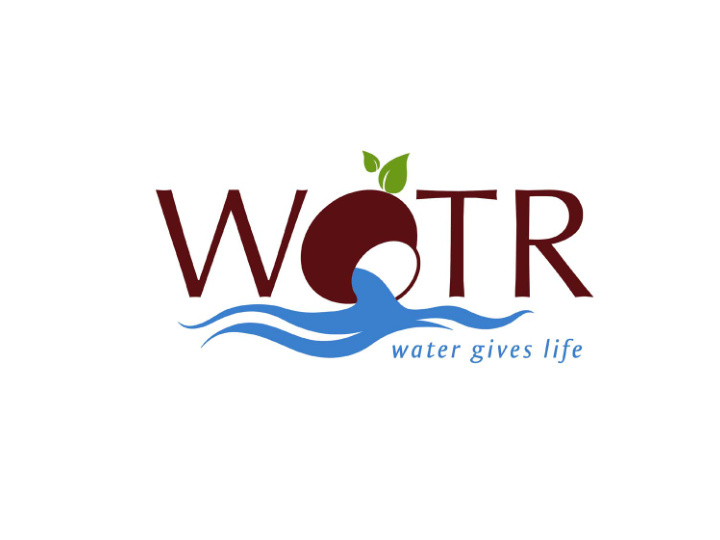



Making Small-Holder Farming Climate Resilient Experiences from the Field Crispino Lobo Managing Trustee, WOTR
Organizational Overview SELF People impacted > 1.8 million Watershed Villages 1,693 Project Villages 3,939 States 7 Area covered (NRM/WSD) 1.01 million ha People trained > 385,000 Personnel >170 Group Personnel >300 Women SHGs Promoted/Supported > 11,800 Support provided to Projects in Somaliland, Kenya, Tanzania and Malawi .
Thematic Areas and Competencies 1. Watershed/ Ecosystems Development and NRM 2. Climate Change Adaptation 3. Integrated Water Resources Management 4. Sustainable Adaptive Agriculture 5. Agro-Meteorology 6. Rural Livelihoods 7. Health, Sanitation, Hygiene, 8. Food Security and Nutrition 9. Gender, Inclusion (equity) and Women’s Empowerment 10. Alternate Energy 11. Capacity Building and Training 12. Institutional and IT-enabled Systems Development 13. Knowledge Management-Action Research , Development Communication 14. Policy Dialogue
Adaptive Sustainable Agriculture Conservation, Management, Use Efficiency Water Availability Cropping Pattern FOOD & WATER System of Crop Soil Health and Intensification Environmentally (SCI)/Farmer safe Practices Field Schools Water Budgeting Water Weather - Based Conservation Crop Advisories Technologies Integrated Water-Nutrient – Pest Management
Water Budgeting and Management 3. Water Budgeting and Management • Assess season-wise water availability - surface and groundwater • Assess current and projected water demand for domestic, agriculture, livestock and livelihood purposes • Match existing water availability with demand • Choose crops and cropping patterns in line with net water availability keeping in mind household food security and market (income) needs • Introduce water conserving technologies –drip, sprinkler, etc • Determine and Introduce sustainable surface and ground water accessing, management water sharing practices
Water Budgeting for Village
Soil Testing Lab and Soil Health Card SOIL HEALTH CARD Farmer Name : Thakaji Namdev Thokal Village : Hivare Korda Cluster : Parner Tehsil : Parner District : Ahmednagar Area : 0.20 ha Date of soil sample collection : 20/04/2016 Gat No . : 2 Survey No . : 125 Soil colour : Medium black Previous season crop : Source of irrigation : Well Green gram Next season crop : Rabi Sorghum Type of irrigation : Surface GPS Coordinates : Soil Nutrient status Elements Availability Category Major Elements Organic carbon (%) Medium 0.55 pH 8.3 Slightly alkaline EC (dSm/m) Normal 0.16 Nitrogen (kg/ha) low 197 Phosphorus (kg/ha) High 31.2 Potassium (kg/ha) Very high 415 Secondary Elements Sulphur (ppm) Medium 17.5 Micro nutrients 10 important soil parameters : Iron (mg/kg) 7.39 Medium Zinc (mg/kg) 0.5 low pH, EC, Organic Carbon, Nitrogen, Boron (mg/kg) 0.2 low Recommendations Phosphorus, Potassium, Sulphur, Fertilizer dose ( kg/ha) Crop FYM Vermicompost Urea SSP Time of application (t/ha) (t/ha) Zinc, Iron and Boron Basal dose 3.5 1.5 25 50 Rabi Sorghum - - - 25 30 Days After Sowing Agri. Officer WOTR, Pune
Locale-Specific Meteorological Information Automated Weather Stations installed in 87 villages (76 with telemetry links) Weather information displayed on boards in villages Awareness creation amongst villagers Farmers use the information to plan for agricultural operations and livestock management Training for villagers
The Agro-Met Advisory System: An Overview
On Field Interventions – Learning By Doing Water Efficiency Enhancing Systems • • Farm Ponds Shade Nets/ Polyhouses/ New • Technologies • Farmer Field Schools/ Exposure Visits Eco-friendly Farming • 11
Nature-based Farming, Agro-Biodiversity and Mixed Farming
Capacity Building, FFS and On-site Technical Support
System of Crop Intensification Systematic Soil Application Preparation of Organic and Inputs Management Micro- nutrient Crop foliar spray Geometry and basal applications 4 step approach to enhancing productivity of both soil & crop yields
How is SCI …Climate Compatible ? Good yields even without assured number of irrigations Climate Risks : Long dry spells , Stronger stilt roots , stems , branches : less damage irregular rainfall patterns , high intensity rainfall , temperature No shrivelling up due to sudden fluctuations temperature fluctuations specially in vegetables : higher water holding capacity
Market - Inclusive Initiatives • Aggregation of Inputs and Produce:Establishment of Farmer Producer Groups/ Companies • Promotion of Agri-Input Enterprises and Advisory Services Centres • Entering the Value Chain and Improved Market Access • Mentoring, Capacity Enhancement and Linkage Building
SYSTEM OF CROP INTENSIFICATION (SCI) Crop Demonstrations • Live demonstrations make a huge difference
Results : Ground Nut
GROUP IRRIGATION MODEL (GIM): System of Crop Intensification (SCI) and Increased Water Use Efficiency - Yield and Cost of Cultivation Comparision between Yield and Production Costs in vegetable cultivation between Project and non-Project Village Crops Israipalli ( project village ) Non-project village Average average Average Average Yeilds /acre Prod.cost/a Yeilds /acre Prod.cost/acre in quintals cre in quintals Brinjal 3,772 14 20,000 15 Tomato 5,804 25 16,000 8-12 quintals 10-14 chilly 4,507 11 25,000 quintals 14-18 Ladies finger 3,580 6 20,000 quintals Small 10 -12 3,825 16 6000 cucumber quintals Source: FGDs with farmers in neighbouring village and Israipalli village 18 HHs data.
Thank You! WWW.W .WOTR TR.O .ORG
Recommend
More recommend